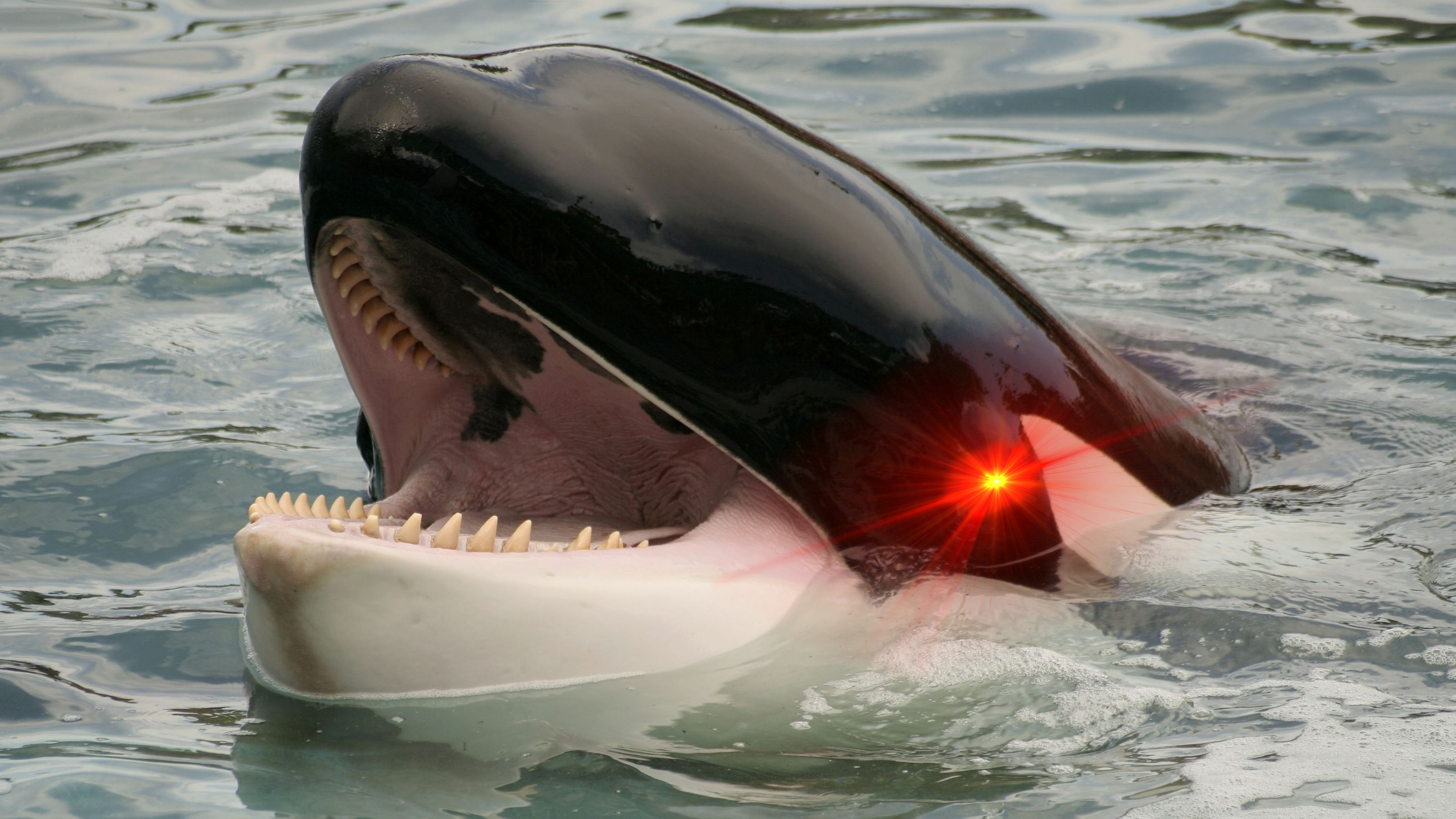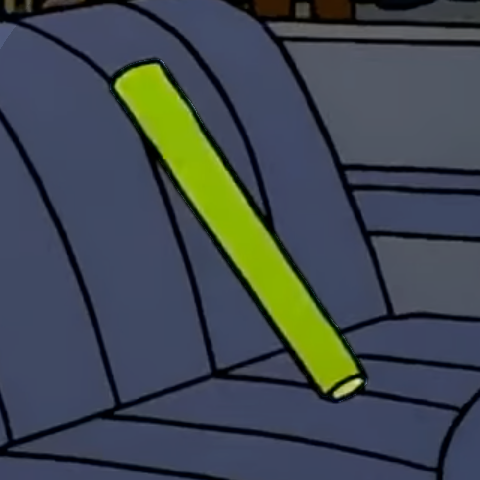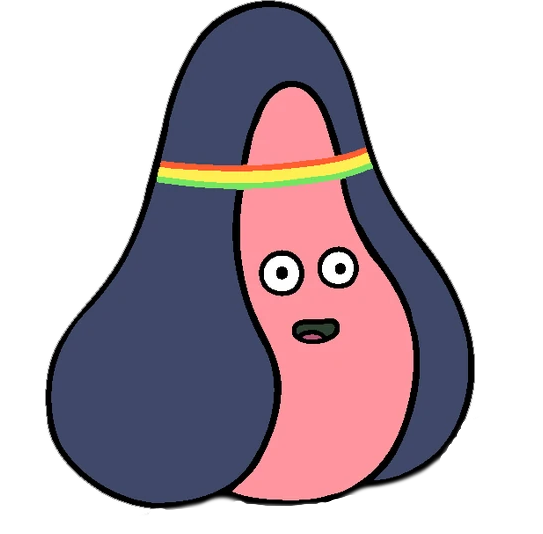Relevant XKCD quote I think of frequently:
Normal light interacts with the atmosphere through Rayleigh scattering. You may have heard of Rayleigh scattering as the answer to "why is the sky blue." This is sort of true, but honestly, a better answer to this question might be "because air is blue." Sure, it appears blue for a bunch of physics reasons, but everything appears the color it is for a bunch of physics reasons.
When you ask, "Why is the statue of liberty green?" the answer is something like, "The outside of the statue is copper, so it used to be copper-colored. Over time, a layer of copper carbonate formed (through oxidation), and copper carbonate is green." You don't say "The statue is green because of frequency-specific absorption and scattering by surface molecules."
So yes, they are blue. They're just blue for a slightly less common reason than other blue things.
You see the light reflecting from paint doesn't actually become blue, it loses yellow

so if i put spectrophotometer, it won't show spike at 460 nm?
well, yes, it would

fucking nerds
This isn't that pedantic paint shit. The tweet did a bad job of explaining
Blue Jays are blue because of structural coloration rather than pigmentation, like how peacock tails or butterfly wings work. While the actual pigmentation on a Blue Jay's wings is brown, the light bending caused by the tiny structures within their feathers makes them blue. Pretty neat!
The end result is still the same, the neat interference aside, they are "really blue". The starting point of the tweet they are not and it is nerd shit.
The neat interference can be brought up by like comparisons to: gas spills on water, butterflies, tempered steel, dslr lenses, *opals!
Yeah bad tweet for sure, I just think structural colour is very cool.
Adam Sandler peering at a Blue Jay with a magnifying glass
"Holy shit I'm gonna cum"
It's light scattering rather than "bending", which is not bending but rather refraction due to the differences of the speed of light within the feathers compared to outside the feathers in the air.
when I'm at a pedantic nerd competition and my opponent pulls out a spectrophotometer

You came at me talking about objective facts without scientific instruments? Think better, kiddo
a UV-vis spectrum of the pigment in their feathers should look like this and the observed light is from scattering instead of absorption processes. god fuck please wedgie me
pedantic shit but since im shrivelling into a corn cob: reflectance spectroscopy on a bulk structure that reflects blue shows that it indeed reflects blue, not that the material comprising the structure itself transmits blue as with pigments
 <- this is me rn.
<- this is me rn.Pigments (typically used in non transparent dyes) don't transmit, they subtract parts of white light, and reflect what we call their color. Indigo does exact same shit - indeed reflect blue(tm).
its not "an optical illusion"
shit fair shout had internal transmittance and absorption mixed up. and yeah it's not an optical illusion, it's still reflecting blue light, just not as a direct result of electronic effects
They're red-jays, you just can't tell because they're flying so fast directly at you.
Soooooooooooooooooooooooo.
There's pigmentation which will absorb non-blue (for example) and then you can have something like the blue-jay which has feathers that will scatter light and resulting in the bird appearing blue.
It's like how the sky appears blue at mid-day because of the scattering of sunlight by the constituent particles. The sky is colorless otherwise.
Maybe more simply: it's a matter of light scattering (feathers), or light absorption (blue feathers).
... the sky appears blue ... because of ... constituent particles.
The sky is colorless otherwise.
pls explain.
It is more complicated than this as the atmosphere of the earth also creates its own light (since it has a temperature it emits radiation like a blackbody, and there are many processes known as airflow that emit light too, it's just very faint).
But to keep it simple:
What colour is the sky at night? Black, which is the absence of light (you're basically looking at space).
When light from the sun (which is composed of all wavelengths of light, emitted roughly like a blackbody) reaches the atmosphere a few things can happen to it based on the wavelength of light, and because of the atoms and molecules present in the atmosphere.
It can scatter (think of a small ball bouncing off a bunch of bigger balls in all directions)
It can be absorbed (the energy from the light is absorbed by an atom/molecule increasing its temperature/kinetic energy, or exciting the atom/molecule into a higher energy state, potentially being released as a different wavelength of light.
It can be deflected/refracted, thereby changing the direction of the light
Or it can pass through.
It's more complicated than this but we will go with it for now.
Because all of these are dependent on the wavelength of light, different colours will behave differently. At noon, the amount of atmosphere the sunlight passes through is at a minimum, and due to the chemical composition of our atmosphere, the only wavelengths (in the visible wavelengths) that pass through almost freely are the ones on the red side. So, the blue is scattered, and inevitably some is scattered into our eyes.
During sunset, there is so much atmosphere between you and the sun, even the red wavelengths are scattered.
What determines which is scattered? Different atoms/molecules have different physical sizes, So a big molecule will scatter wavelengths smaller than it.
And, blue is smaller than red (400nm vs 650nn).
I hope that helps and isn't too much.
Tldr;
No
This may be slightly simplistic
Sky is made of air. Air is colourless, and space is black. So it has to be the sunlight hitting the air to cause the colour. During most of the day, the sun hitting the air makes it look blue. When the sun is at a different angle, such as dawn and dusk, it looks red/orange. The chemical composition of the air doesn't change, nor does the colour of space. The only thing that's changed is the angle/amount of sunlight. Thus, we can infer that while the sky appears blue, it's not due to it being inherently blue, but rather it's blue due to sunlight hitting it at specific angles.
If you were observing the same orange sunset a couple time zones away, under the same sky, made of the same oxygen, nitrogen and carbon dioxide, at the same moment in time, it could be mid afternoon and the sky is perfectly blue.
I remember seeing a whole ass nerd video talking about it and the only true blue animals are a butterfly and a frog
Did you know that the robin isn't really visible? We only see it as visible because light bounces off of it and enters our eyes.
the guy who named it a "blue jay" was a lying piece of shit, never to be trusted
shoulda called it the "actually not blue you dumb motherfucker jay" instead
Yeah fuck Canada!
What's the joke though?
That is how light works there, its subsurface scattering or thin film interference (don't remember which) isn't it?
It's someone fundamentally misunderstanding an actual fact (that blue colors in nature almost never work the same way as normal pigments, and are a physical structure refracting light instead of a chemical that absorbs other light frequencies and reflects blue ones) as meaning something isn't "really" blue. Like the feathers aren't a blue pigment that could be dissolved in some base and used as paint (presumably) because their color is a structural rather than a chemical property, but it's just silly to decide that the ontology of something "being a color" is dependent on chemical pigments instead of what it literally looks like when exposed to light.














